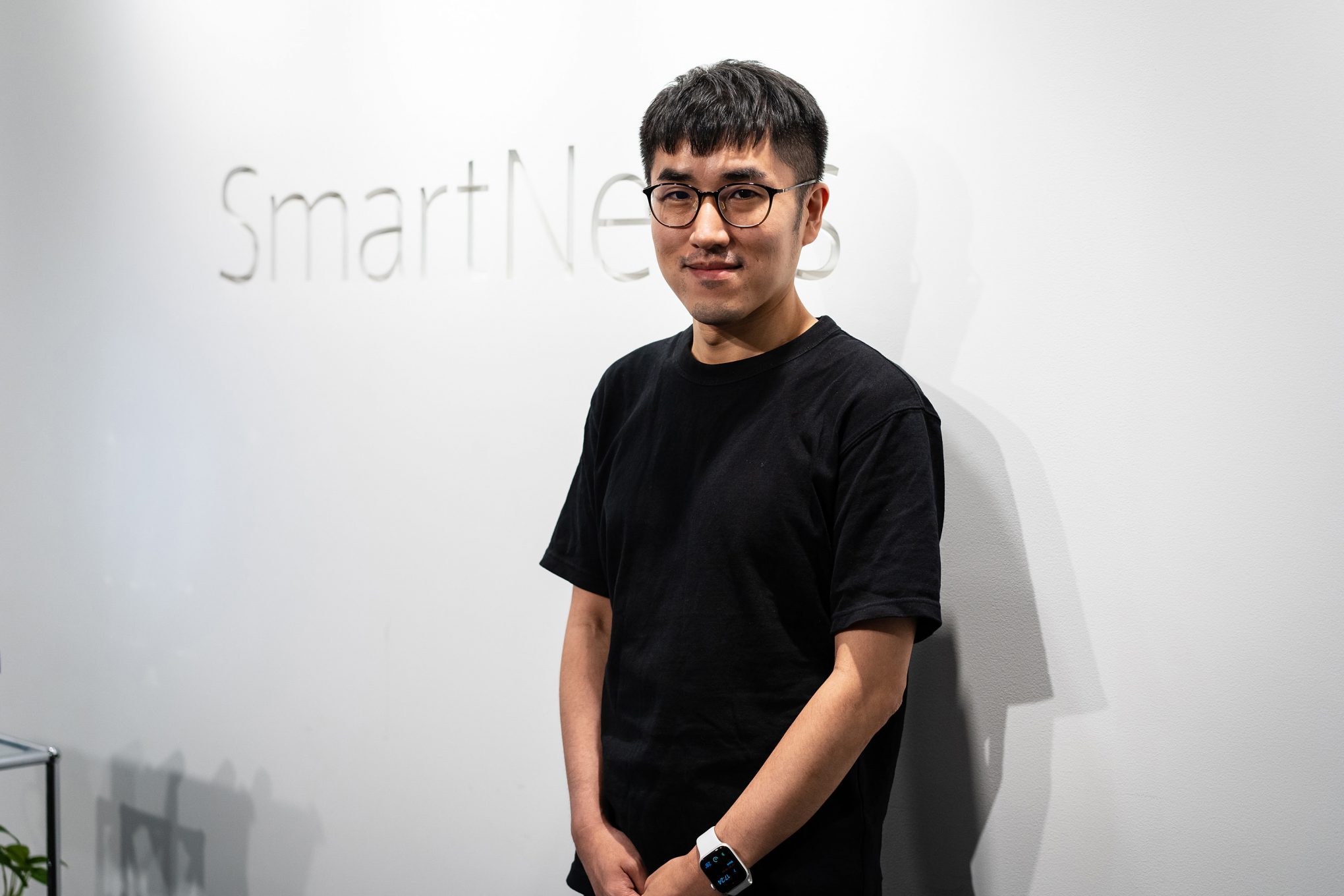
Overcoming differences in language, culture, and time with empathy for the mission
To start with, tell us about your career as an engineer. What got you interested in programming?
I was interested in it when I was in elementary and junior high school. At that time, a lot of kids were starting to study programming because they wanted to make their own computer games. I was making games in junior high school, too. For example, there was a tile-matching computer game called Puyo Puyo that was only for two players, so I made a three-player version in which three people shared one keyboard. During our school festival, I installed the game on the school computers and held a game competition. Over time, I started to want to make more practical software and later when the Internet became more widespread, I thought that I wanted to make something using the Internet. I think the shift in my interest from programs that were limited within a single machine to the fun of connecting with the outside world through the Internet was a big change for me.
You said you wanted to make software that was practical. What kind of things did you create?
For example, I created an application launcher, which is a program that helps applications or files to boot, called Cool Launcher. It’s still available on Vector, a site that compiles free software. Cool Launcher was covered in a feature article, and it got a lot of downloads because of that. I was genuinely happy to have something that I created by myself get used by others via the Internet.
The feeling that was always the foundation for everything was my desire to pursue and create things that I found interesting. That also applies to starting a business. It wasn’t until university that I began to think about starting my own business. I still wanted to create something that I found genuinely interesting, and I began to think that starting a business would be the way with the highest likelihood of turning that ambition into a reality.
Do you still have the same passion for making things today?
I do. Personally, I think that I’m the type of person who puts their own interests first rather than the type who solves the world’s problems. While our CEO Ken Suzuki is a visionary who acts by looking ahead to the future, I really can’t think about the distant future. I’m more like a craftsman, concentrating on what’s right in front of me.
How did you meet Ken Suzuki?
We met in 2009 through a mutual acquaintance. At the time, I had developed a blog visualization service called “Blogopolis.” It won the general category Grand Prix in the Internet Creative Award held by Yahoo! Japan, and apparently that got Ken interested in me. At the time, Ken wanted to make an interesting demo for an upcoming presentation and apparently he wanted to brainstorm with me about ideas.
After that, he acted as a kind of mentor for me for a while, occasionally giving me advice on the things I was making by myself. He always had something of substance to say, and his perspectives and opinions hit home for me. There was even a time when we sat talking in a diner until morning. His enthusiasm really inspired me. As a result of my interactions with him, the things that I made gradually improved. It was also around that time that I began to feel strongly that if I was ever going to make something with someone, I wanted to do it with Ken.
Did the original idea for what is now SmartNews come out of your connection with Ken?
Yes. I had been making a news service called Crowsnest between 2010 and 2011, and SmartNews was born from a pivot of that service. Crowsnest used basic technology to collect, analyze, and organize information from the Internet. That technology was directly applied to SmartNews.
When did you start to think about expanding SmartNews globally?
Expanding globally was something that I had in mind from the beginning. While I was building Crowsnest and gathering information on the Internet from all over the world, I realized how much information there is not only in languages like Japanese and English, but in all kinds of languages such as Indonesian. I thought it would be interesting to be able to include all of those languages as well, so I built a language detection module. In 2014, two years after the release of SmartNews in Japan, we started working on developing the U.S. edition of the app as well as opening up and hiring for the U.S. office. It was tough because we were really starting from nothing.
Were you able to speak English at that time?
I could speak at least a little. I’m the kind of person who gets really absorbed into things. There was a time during college when I was obsessed with improving my TOEIC test score, so I studied to some extent then. However, when I went to America in 2014 and had to talk to a lot of different people, I felt like I couldn’t really communicate naturally and started to study again. Fortunately, I had gotten the basics down during my period of TOEIC obsession, so I was able to improve with just a little bit of effort.
What kind of culture do you feel has been fostered at SmartNews from its inception to the present?
From my perspective as someone who was in an engineering role at the time of the company’s founding, I think people here take a careful and sincere approach to building things and understand the importance of such commitment.
Do you feel that the mission of “delivering the world’s quality information to the people who need it” has permeated the organization?
I do. Without this mission, I think it would have been difficult for us to manage the organization across multiple countries, as we do today. For example, when I’m interviewing a candidate for our overseas offices, I ask myself, “how can I get this person interested in our company when SmartNews to them is just a company from a distant country called Japan?” That’s when I return to our mission. I think the most important thing is whether or not the candidate can relate to what we are trying to do. Empathy for that mission will help us overcome barriers, whether they be language, culture, or even time difference.

Over the past ten years since you came up with the original idea for SmartNews, how do you think the environment surrounding information and technology has changed?
Considering the fact that mobile networks have evolved from 3G to 5G and how you can connect to the Internet virtually anywhere— even on the subways here that were out of range ten years ago— I would say that the infrastructure has developed immensely. Thinking back to when we first started SmartNews, we even made it a selling point that you could read the news even when you didn’t have internet connectivity. However, when it comes to the quality of the information being delivered over the Internet, I don’t think there has been such a dramatic change. For example, the issue of filter bubbles is still being pointed out even though this issue was first raised by Eli Pariser in 2011. In other words, we still haven’t come up with a solution to this problem even though it’s already been ten years. The polarization of information and the fragmentation of society, which are concerns in the U.S., are symbolic of this. It’s a problem that needs to be solved, but the answer is not easy to find.
Why do you think problems like the filter bubble arose and why do you think they are still unresolved?
When looking at the issue from the perspective of a technologist or a business owner, it may be because maximizing the click rate has become the only purpose for developing technology, for instance. But when you think about it from a larger perspective, using technology for such purposes may be making the situation worse.
What do you think are the clues to solving such problems?
First of all, I think it is really important for service providers like us to seriously recognize that these problems are caused by the way we utilize technology. Technology can be taken in any direction, depending on how it is used. The filter bubble is created by personalization, but personalization in itself is not a bad technology.
Does this mean that the ethics on the part of service providers are being questioned?
That’s exactly right. One of the core values at SmartNews is “For the Common Good.” By setting this as one of our values, SmartNews has set pursuing good for society as a whole as our target function.
Last question. How much of SmartNews’ mission do you think has been achieved so far?
We’re nowhere near reaching our goal. We are continuing to advance in the U.S. market, but from the perspective of the company mission, even if we succeed in the U.S., that’s still only one part of the world. There are still many more things that need to be resolved.
Books
Book Recommendation

Learning what it takes to successfully start a business
This “Guide to Business Planning and Venture Management” is a slide presentation made by the Ministry of Internal Affairs and Communications. Although it’s not technically a book, this document had a huge impact on me personally, so I would like to introduce it to you. When this was published in 2008, I had a vague idea that I wanted to start a business, but the information and ecosystem for entrepreneurs was not as well developed as it is today. So I thought, well, I don’t know much, but I’ll do my best to start a business. It was at this time that I heard that the Ministry of Internal Affairs and Communications had released an interesting document. I decided to casually read the document without too much thought.
It started out with a harsh claim, saying that there are a surprisingly large number of venture company owners and people in the process of opening their own business who do not seem to fully understand the positioning of ventures or the situation they are in. The document went on to challenge its readers, asking things like, “Have you taken the tedious step of asking a friend of a friend to set up numerous interviews with potential customers and key people in the industry?” and “Have you studied your customers so thoroughly that you can talk about customer needs, customer characteristics, and customer segmentation for two or three hours?” and so on. The content was relentless. (laughs) Reading this document made me change my attitude. I thought to myself, “This is the level of work I have to put in.” At SmartNews, there are more and more opportunities to tackle new challenges in the form of new businesses within the company, and I hope that business drivers and product managers who create such business plans will also read this book.
Jigyo kikaku sakusei to bencha keiei no tebiki [Business planning and venture management guide]
Author: Ministry of Internal Affairs and Communications
Date published: March 2008


